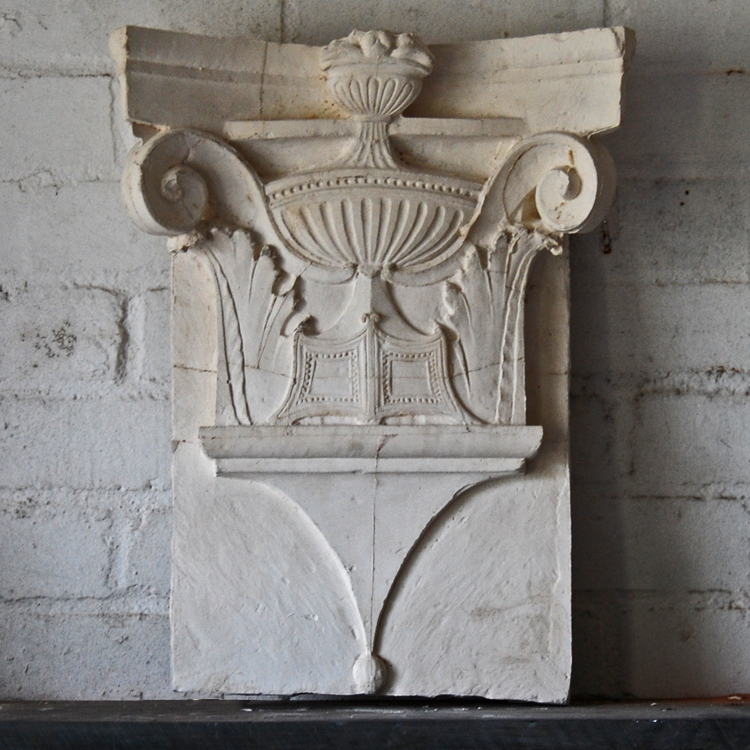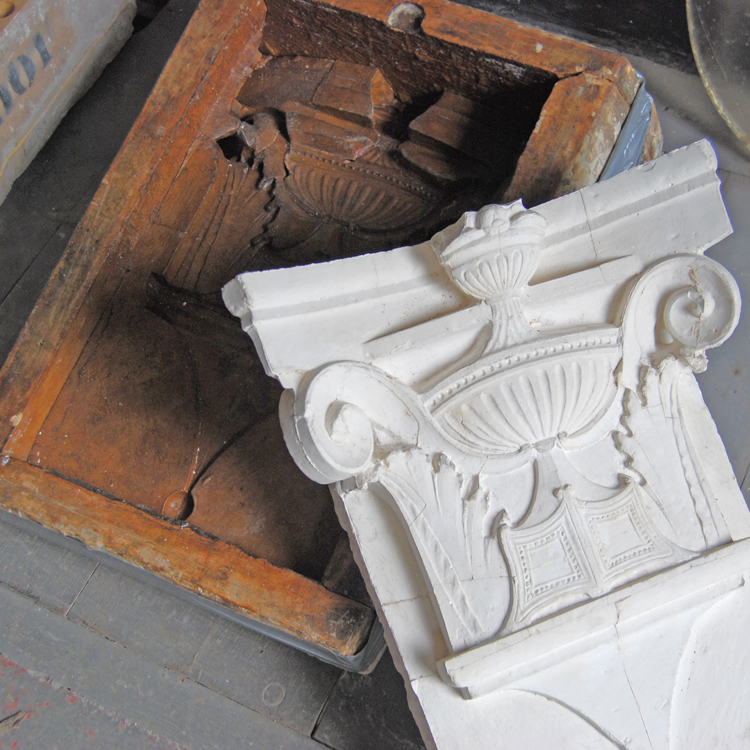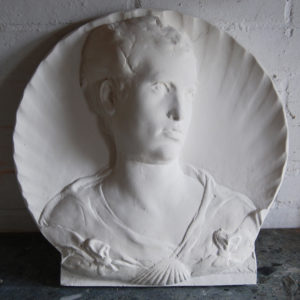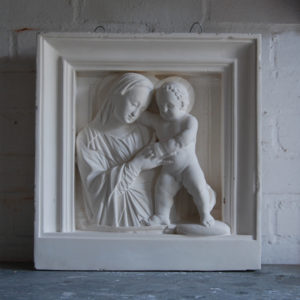No products in the basket.
A relief-cast plaster pilaster capital,
after the Victorian piece-mould by Dominico Brucciani; the original mould was made at The South Kensington Museum, directly from the mid-fifteenth century Italian Istrian stone original by Francesco di Giorgio (1439-1501),
the Roman ionic order capital with splayed volutes centred by a lobed urn in forced perspective,
£395
In stock (can be backordered)
The original Istrian stone capital – referred to as a “console” – is one of a series of twenty-one held in the collections of The Victoria and Albert Museum (formerly the South Kensington Museum).
Francesco di Giorgio carved them between 1483-92 for the Rocca Roveresca di Mondolfo near Sinigallia in the Marches, central Italy where the series formed decorative terminii at the springing point of the ribs to the vaulted ceilings. The Rocca Roveresca was a fort on the Adriatic coast which was commissioned by Giovanni della Rovere, Lord of Senigallia and nephew of Pope Sixtus IV
See:
List of Objects in the Art Division, South Kensington Museum acquired in the Year 1878. London, 1879, p. 35 Pope-Hennessy, John.
Catalogue of Italian Sculpture in the Victoria and Albert Museum. London, Her Majesty’s Stationary Office, 1964, pp. 306 Raggio, Olga. ‘Catalogue of Italian Sculpture in the Victoria and Albert Museum’, Art Bulletin vol.L, 1968.
Exhibited:
“In the Light of Apollo” (National Gallery, Alexandros Soutzos Museum (Athens) 22/12/2003-31/03/2004)
LASSCO saved the rare original piece-mould from a dispersal of workshop goods originating at D. Brucciani & Co.
Domenico Brucciani (1815-1880) was born in Lucca, Italy, moved to London as a young man, by at least 1837, and soon became a revered formatore – plaster-caster. His business built up special links with both the British Museum and the South Kensington Museum (later re-named The Victoria & Albert Museum).
His most substantial commission for the South Kensington Museum was the casting of the Pórtico de la Gloria, the 12th-century façade of the cathedral at Santiago de Compostela, in 1866. This huge undertaking – and many others including, famously, Trajan’s column itself – followed the agreement forged by Henry Cole and Prince Albert at the Paris Exposition of the previous year, signed by all the Crowned Princes of Europe, to further the common man’s experience of sculpture in-the-round by the reciprocal casting of great European sculpture. What followed was the Cast Courts at prestigious museums across Europe and beyond; Brucciani was foremost among the formatore.
He taught sculpture, moulding and casting at the Royal College of Art (including National Art Training School) from 1853 to 1861.
His company, “D Brucciani & Co.”, with workshops in Clerkenwell, survived its founder with the Covent Garden outlet still operating into Edwardian times. A catalogue of their wares is held at The National Art Library. However, by the turn of the century, the direct casting of priceless sculpture was becoming frowned upon; travel across Europe was now much easier anyway – the common man could now use the train. The company faltered. In the 1920’s its casting workshops were subsumed by the Victoria & Albert Museum.
The making of piece-moulds – a plaster negative jigsaw enabling a cast to be released by the careful removal of the solid mould in pieces – is today a lost art; it has been rendered redundant by pliant silicons. We have duly made a silicon mould in order to preserve Brucciani’s work. The accuracy and detail of the resulting casts, taken as they are directly from the original is plain to see, and a delight.




